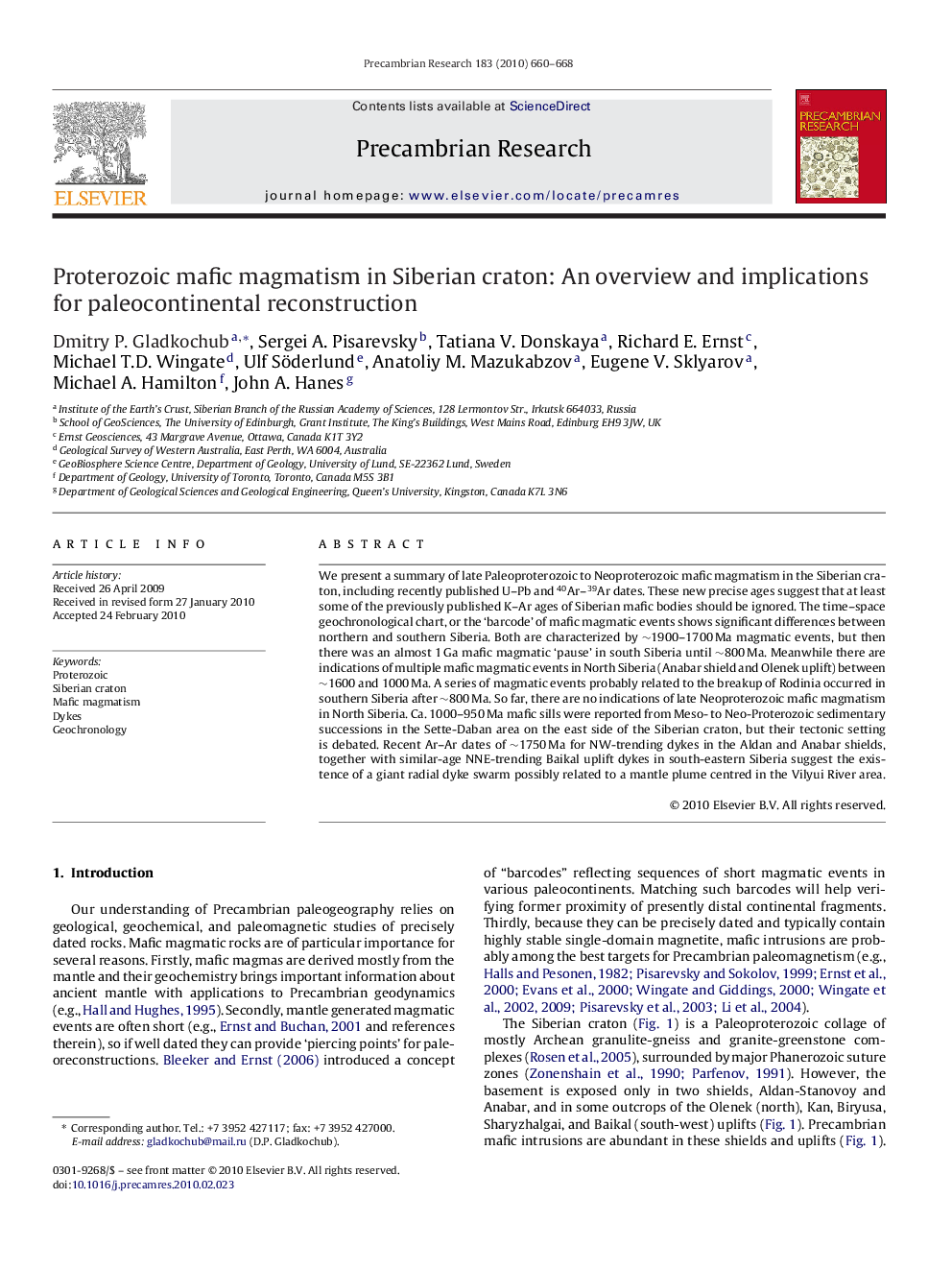| Article ID | Journal | Published Year | Pages | File Type |
|---|---|---|---|---|
| 4723730 | Precambrian Research | 2010 | 9 Pages |
Abstract
We present a summary of late Paleoproterozoic to Neoproterozoic mafic magmatism in the Siberian craton, including recently published U-Pb and 40Ar-39Ar dates. These new precise ages suggest that at least some of the previously published K-Ar ages of Siberian mafic bodies should be ignored. The time-space geochronological chart, or the 'barcode' of mafic magmatic events shows significant differences between northern and southern Siberia. Both are characterized by â¼1900-1700Â Ma magmatic events, but then there was an almost 1Â Ga mafic magmatic 'pause' in south Siberia until â¼800Â Ma. Meanwhile there are indications of multiple mafic magmatic events in North Siberia (Anabar shield and Olenek uplift) between â¼1600 and 1000Â Ma. A series of magmatic events probably related to the breakup of Rodinia occurred in southern Siberia after â¼800Â Ma. So far, there are no indications of late Neoproterozoic mafic magmatism in North Siberia. Ca. 1000-950Â Ma mafic sills were reported from Meso- to Neo-Proterozoic sedimentary successions in the Sette-Daban area on the east side of the Siberian craton, but their tectonic setting is debated. Recent Ar-Ar dates of â¼1750Â Ma for NW-trending dykes in the Aldan and Anabar shields, together with similar-age NNE-trending Baikal uplift dykes in south-eastern Siberia suggest the existence of a giant radial dyke swarm possibly related to a mantle plume centred in the Vilyui River area.
Related Topics
Physical Sciences and Engineering
Earth and Planetary Sciences
Geochemistry and Petrology
Authors
Dmitry P. Gladkochub, Sergei A. Pisarevsky, Tatiana V. Donskaya, Richard E. Ernst, Michael T.D. Wingate, Ulf Söderlund, Anatoliy M. Mazukabzov, Eugene V. Sklyarov, Michael A. Hamilton, John A. Hanes,
